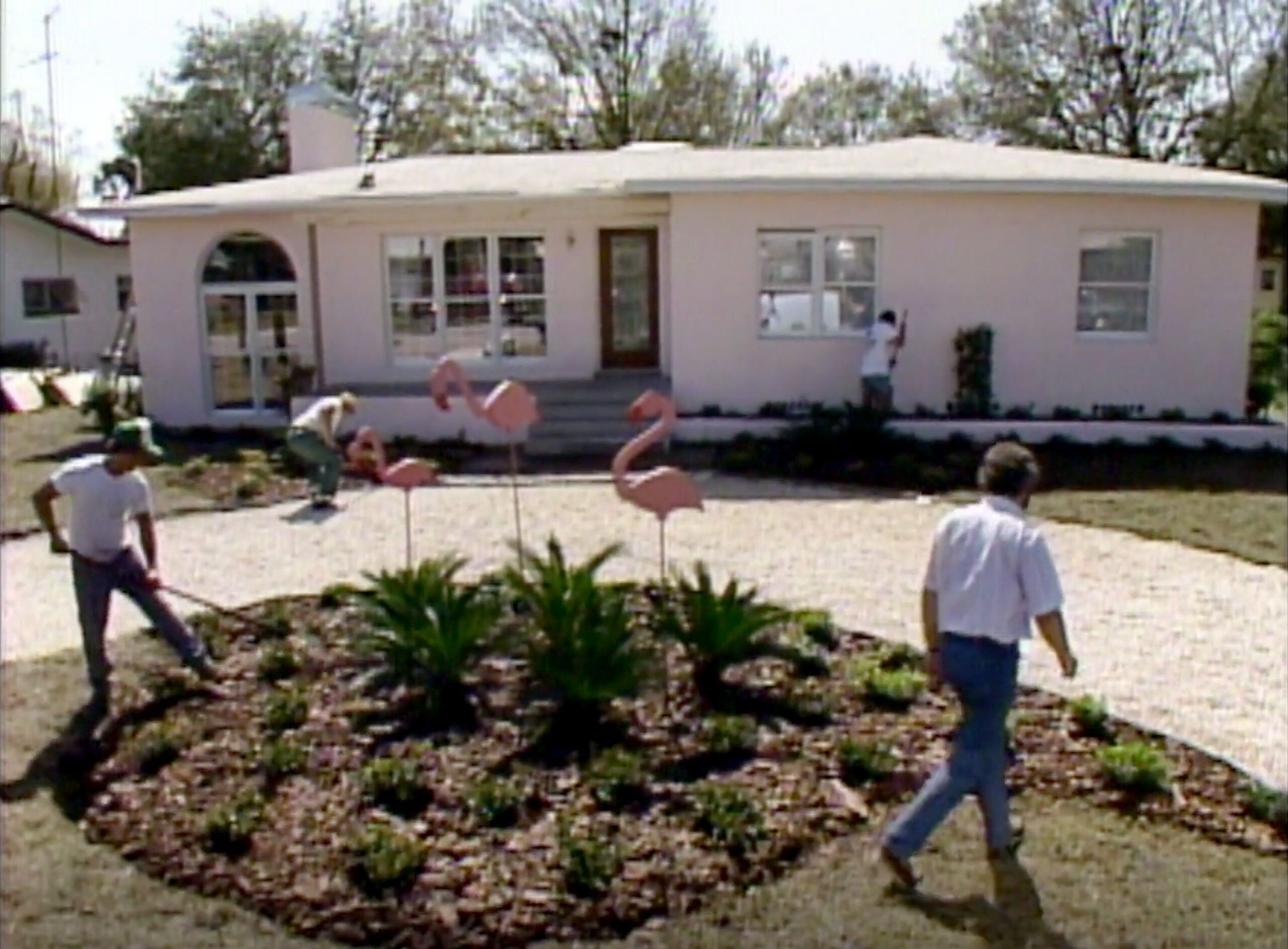For the first time, This Old House left its Boston area home to work its special magic on a tract house in Tampa, Florida, a city that came of age in the 1880s when tycoon Henry Plant built a railroad linking the city to the rest of the country. The project house was typical of the tract houses built across Florida in the 1950s and 1960s: a modest two-bedroom stucco over concrete block structure that sat close to the street. While the house’s lot was narrow, the back yard was enormous—240 feet deep—which allowed homeowners Paul and Amelia plenty of room for improvements.
The renovation plan called for floor-to-ceiling windows on the house’s façade to open up the front of house. The attached garage, too small for a car, became a playroom with double-hung windows capped by a radial window overlooking the front yard and sliding glass doors opening onto the back. The pristine 1950s kitchen, complete with a cast iron sink, gold-flecked linoleum counters and birch cabinets, was updated with fresh paint, new countertops and floor tile. A new screened-in porch was added just off the dining room. The house’s modified Florida room—its windows smaller and sparser than the traditional open retreat designed to take advantage of the state’s sunny climate—was transformed into the real McCoy, with French doors opening on to an extensive redwood deck constructed along the back of the house.
Work began when the footings for the new addition were laid—three courses of concrete blocks topped by wooden floor joists. The crew punched a hole in the house’s back wall to establish the joists’ height and match them on the new construction. Framing went quickly but workers ran into a problem in the dining room where the floor was pitched down 5/8″. To ensure that the old and new construction blended seamlessly, they built the new floor to the old floors’ lowest point and then sanded down any high points, leveling the entire surface.
Built when energy prices were low, the house needed retrofitting to conserve on cooling costs. The crew collaborated with contractor Bob Diaz on modern and traditional energy conservation methods to create a comfortable, cost-effective system. An ancient attic fan, the house’s original cooling system, was replaced by a heat pump that could both heat or cool the building as needed. Rigid ductwork supplied the conditioned air to every room in the house.
While Florida’s climate is a boon for outdoor living, the balmy temps bring with them two downsides: heat and bugs. To combat these comfort-busters, the homeowners installed dense screens to block both sun and bugs while letting in light and breezes. Heat-shield windows, which block UVA and UVB rays as well as heat from the sun, also cut down on the house’s energy loss and help cool it more efficiently.
Termites are another common problem in the Sunbelt, so This Old House called in a pest control expert to take a look at the house’s attic, basement, joists and sill, keeping an eye out for bugs, tunnels and affected wood. There was no trace of infestation so prevention was the order of the day. Our expert recommended that homeowners keep their house as dry as possible because termites love moisture, and then pretreated the areas of new construction with a pesticide sprayed at the base of the foundation.
When the time came for the TOH crew to fly home, Paul and Amelia’s house was graced with new landscaping, a rambling redwood deck and spacious new indoor and outdoor living spaces that would provide both a respite from the heat and a place to enjoy the Florida sun.

